For many of us, the option that we are used to using when it comes to making jams, jellies, and other preserves with pectin is to use single-batch boxes.
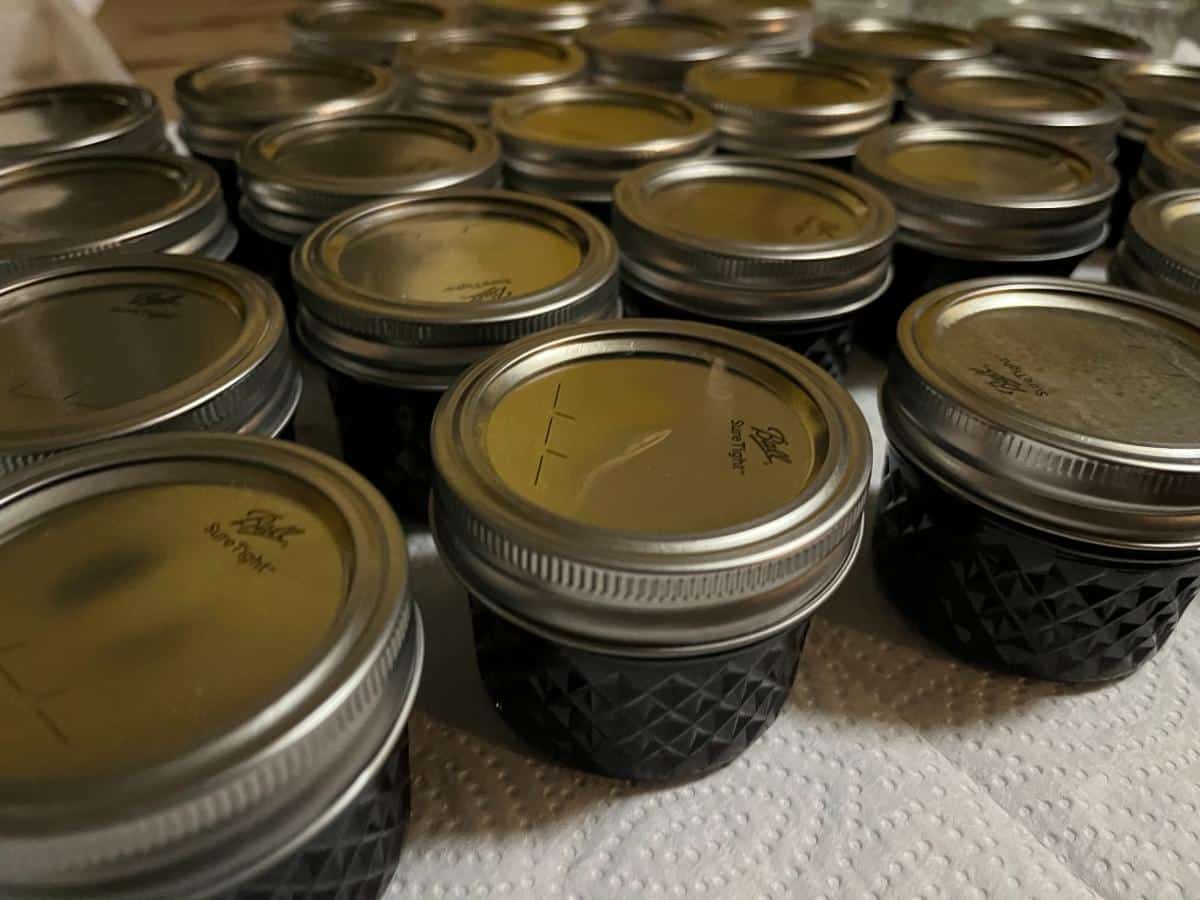
With the increase of online buying and the many options we have for purchasing now (from Amazon to Amish stores and beyond), we find that bags of bulk pectin are widely available.
Bulk pectin is a much cheaper, easier option than buying up boxes and boxes of premeasured pectin that can only make a single batch of a given jam, jelly, or preserve.
The only problem is, we don’t know how to use it!
Jump to:
- Why Use Bulk Powdered Pectin?
- Premeasured Pectin Powder and Its Limitations
- Powdered premeasured to powdered bulk pectin
- Not limited to the box manufacturer’s recipes!
- Measure as much or as little as you need
- What’s Different in the Process When Using Bulk Powdered Pectin?
- VIDEO: How much bulk powdered pectin do you use to replace premeasured boxes?
- How Much to Use?
- How Do You Convert the Measurement for Bulk Powdered Pectin Versus Pre Measured Boxes?
- How much bulk powdered pectin to use, by standard kitchen measurements (in tablespoons)
Why Use Bulk Powdered Pectin?
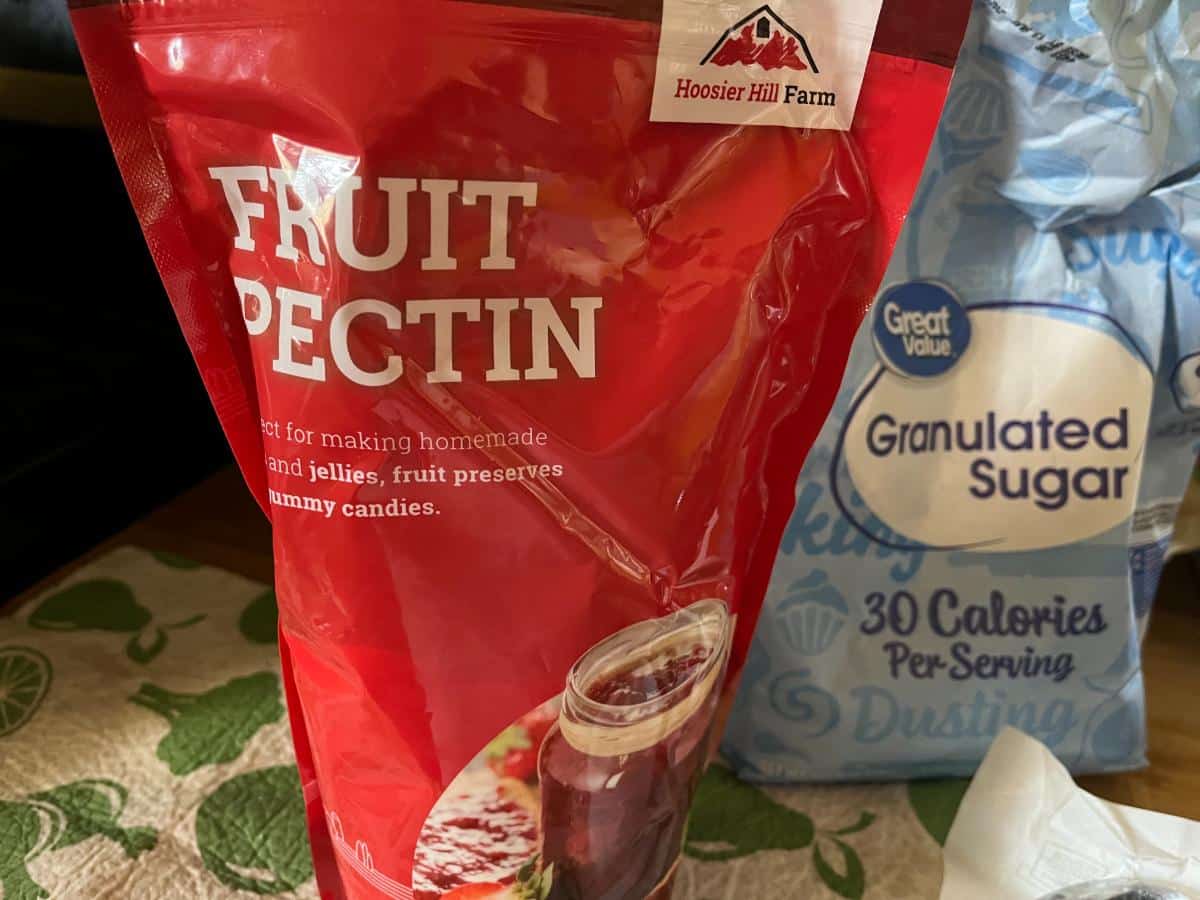
- Much cheaper to buy
- Much more affordable when canning or preserving in large batches or for a season’s worth of canning and preserving
- Less waste and packaging
- Easy ordering and availability
- Versatile and simple to substitute
- Recipe flexibility
Premeasured Pectin Powder and Its Limitations

Premeasured pectin may be convenient, at least in some ways, but it can also be limiting as a home cook or preserver.
For the most part, the only reason we use individual small boxes of premeasured pectin is because that is what is available to us. It’s what pectin comes in in our stores. Even liquid pectin (which is not the focus of this article) is a predetermined measurement of the company producing it.
Using pre measured pectin is how most of us learned to make jam and jelly (and some other preserves).
This has put us at the mercy of the brand. It has largely dictated the cost of pectin when we’re preserving!
Powdered premeasured to powdered bulk pectin
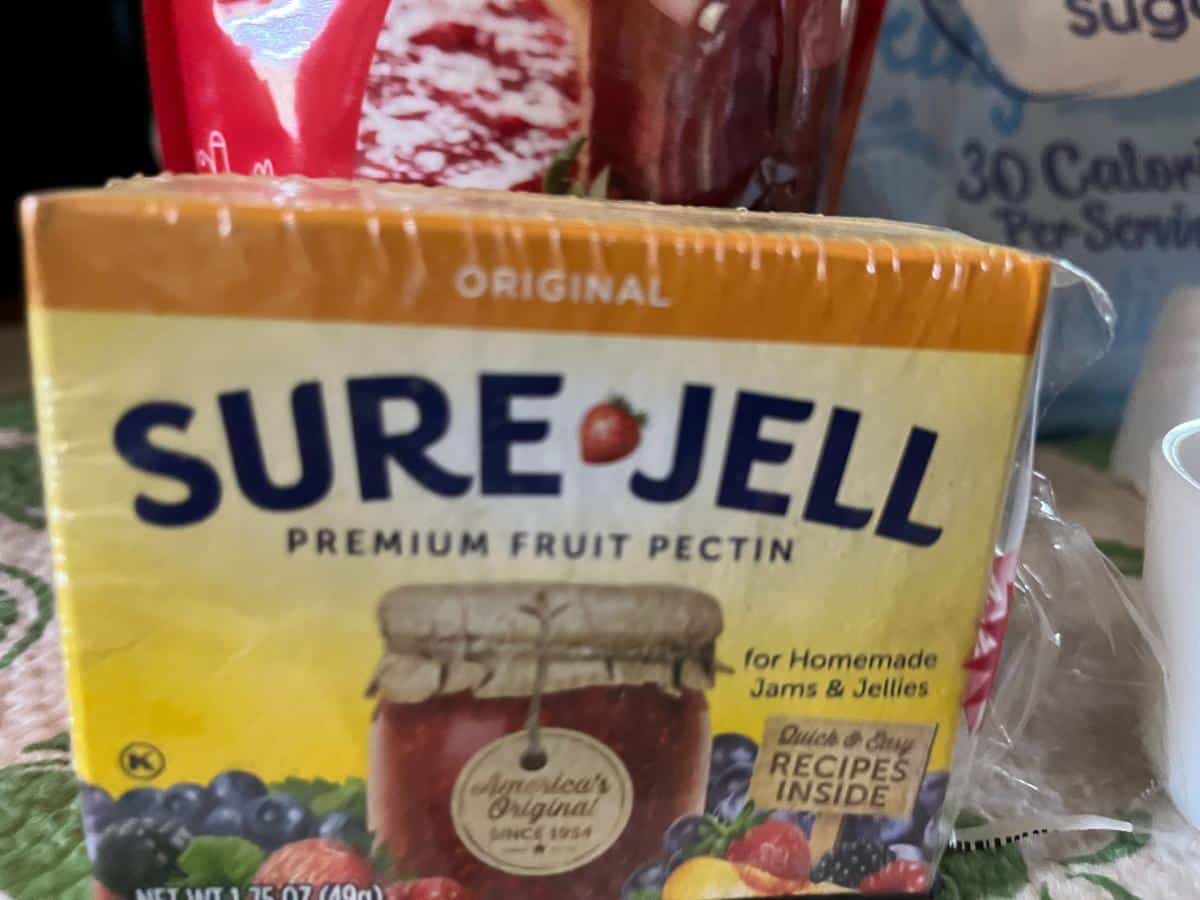
Note that what we are talking about here is how to convert a recipe that uses a measurement such as “one box of XY brand pectin” and use powdered bulk pectin instead.
We are specifically talking about powdered pectin to powdered pectin, not powdered to liquid pectin or vice versa (that is a different conversation and conversion).
In short, this is how to substitute bulk powdered pectin for a single box of powdered pectin.
Not limited to the box manufacturer’s recipes!
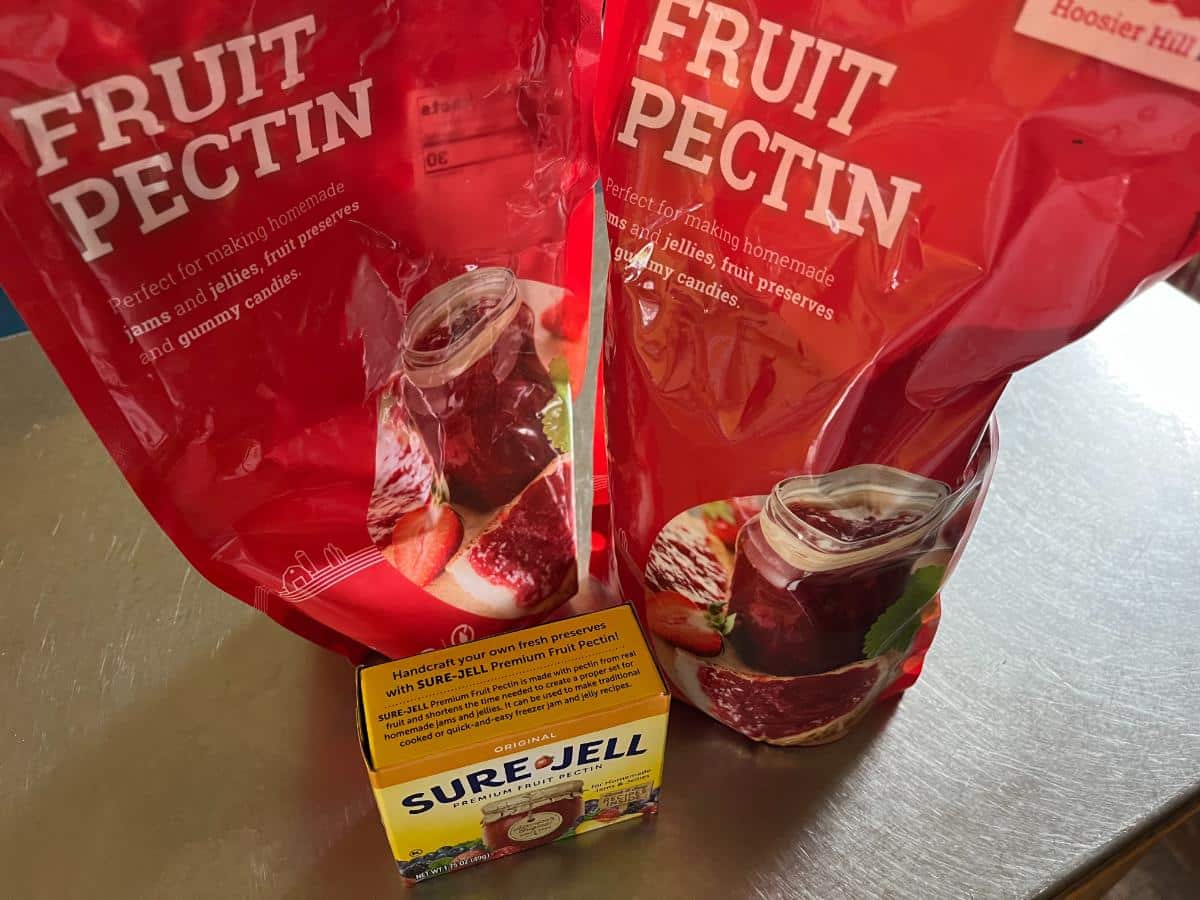
The beauty is that you are not limited to just the manufacturer’s recipes when you use bulk pectin. Each pectin manufacturer seems to have their own recipe. This is because they test and develop the recipes with their own gelling standard in mind.
As long as you use a quality bulk powdered pectin, there is no need to restrict yourself to one or another powdered pectin manufacturer’s recipes.
Just get the conversion right and use a bulk pectin measurement instead.
Measure as much or as little as you need
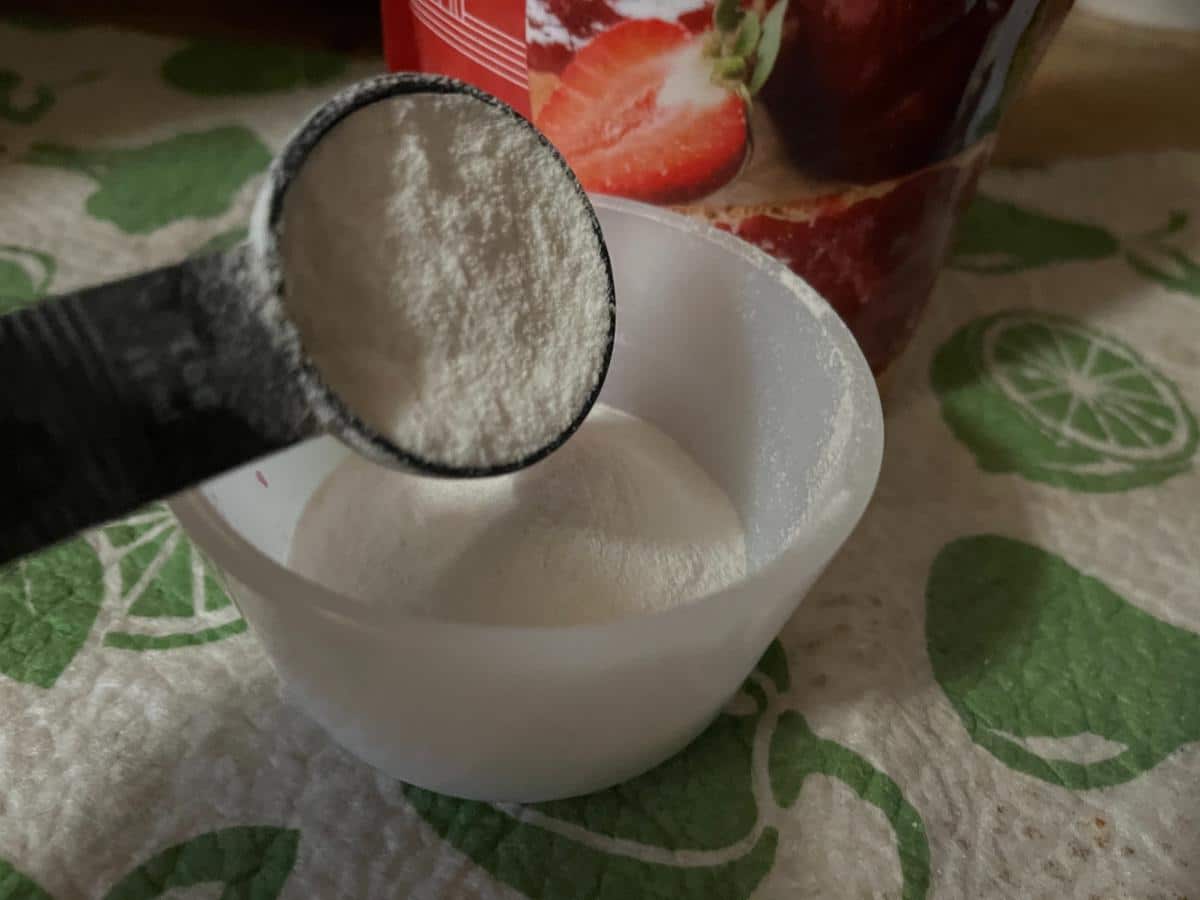
Not all recipes need a full box of pectin. This is another advantage of bulk powdered pectin. You can use only what you need, without wasting.
Bulk pectin usually comes in a resealable bag. You can use it in different amounts for different purposes -- from jam to jelly to preserves to syrups, canned pie fillings, and more.
What’s Different in the Process When Using Bulk Powdered Pectin?
Pectin is a naturally occurring substance in fruits and vegetables. There is more pectin in unripe or underripe produce, in fact. Manufacturers of pectin simply isolate and consolidate it and then sell it to us in a usable form (in this case, dry powdered).
What this means, practically speaking, is that there isn’t really much -- if any -- difference in the pectin itself. The difference is more in the measurement. That’s the part that gets hard to gauge.
Powdered bulk pectin functions the same as prepackaged boxes of powdered, premeasured pectin. You don’t have to change the process or ingredient list to use it. Use the same old recipe you know and love in the same order and with the same instructions.
The only thing that is different is how much to use. That’s the part you have to figure out.
VIDEO: How much bulk powdered pectin do you use to replace premeasured boxes?
How Much to Use?
How Do You Convert the Measurement for Bulk Powdered Pectin Versus Pre Measured Boxes?
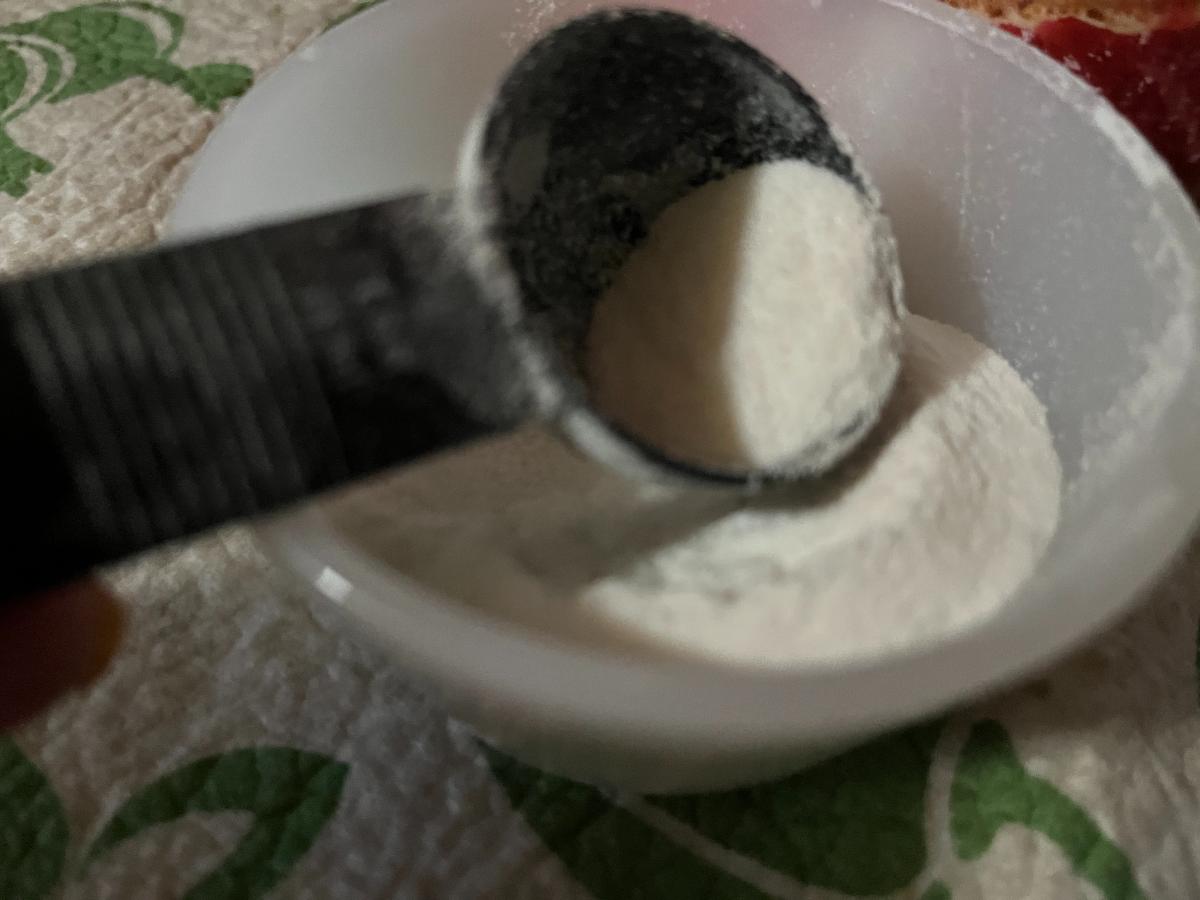
The measurement for pre-measured boxes of pectin (single batch boxes) is listed by weight.
Commonly, a box of pectin will contain 1.75 ounces by weight.
This doesn’t seem to convert evenly for bulk pectin, though. Besides that, weighing out pectin for every recipe and every batch of jam, jelly, filling, or preserves you make is a real pain.
If you measure out the contents of a box of pectin, you will usually come out with something between 4 and 5 tablespoons by dry measure.
That’s usually too much bulk powdered pectin if you do a straight conversion based on the contents of the boxes.
How much bulk powdered pectin to use, by standard kitchen measurements (in tablespoons)
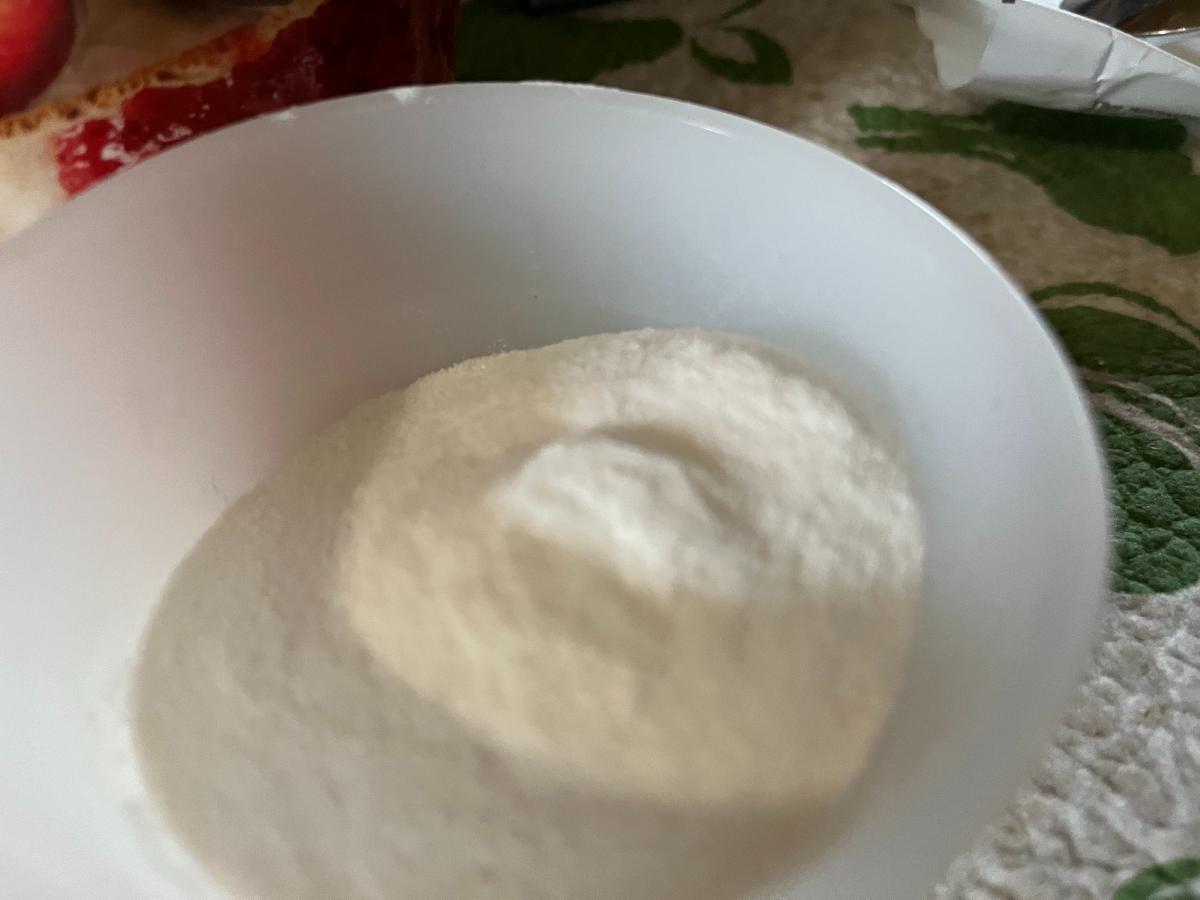
It’s much easier to just do what we do for the rest of our ingredients -- measure them by standard kitchen units of measure like teaspoons, tablespoons, or cups.
Home cooks and university extension services agree:
- If you want to use bulk powdered pectin, use 3 tablespoons of pectin for each standard commercial box of pectin
This conversion has proven ideal time and time again.
If you do find differences in the set or texture, you can increase or decrease the amount and find what works best for the recipe(s) that you use.
Do keep in mind that other things affect set and thickness, too. The natural amount of pectin in the fruit and the ripeness of the produce comes into play.
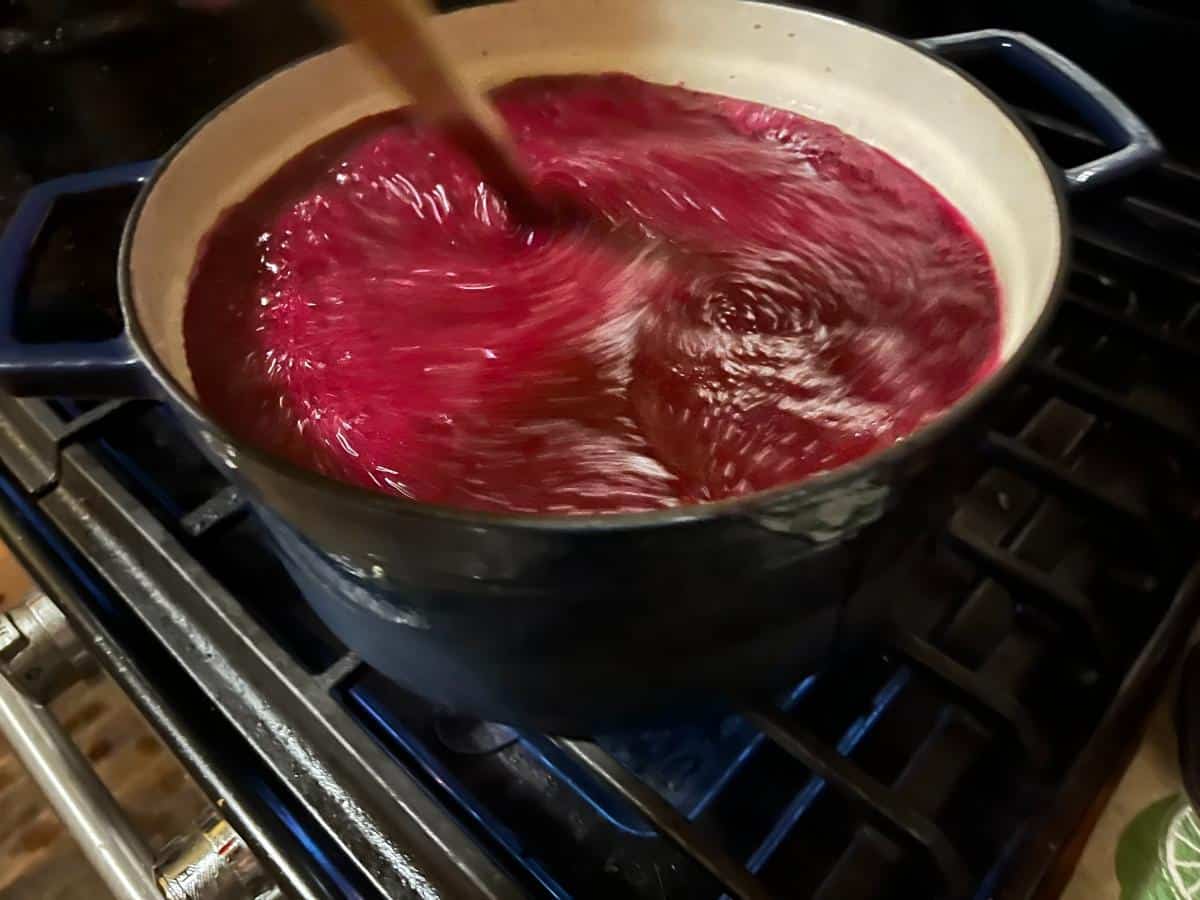
Overall, however, if you use a standard measure of three tablespoons of bulk pectin per 1.75-ounce box, you should have no more trouble with your canning and preserving than you ever have with the pre-measured boxes of pectin.
*We tested this conversion using Hoosier Farms Bulk Powdered Pectin. Two pounds cost only around $20. We used it with recipes we’ve used in the past with different boxed, pre-measured pectins.
Some of the recipes we used in testing came from the Ball Blue Book and some from the old Sure Jell packages (which sell on Amazon for around $14 just for a pack of three, which would make only 3 batches!). The results were great! Perfect texture and set when using this measurement with proven recipes!

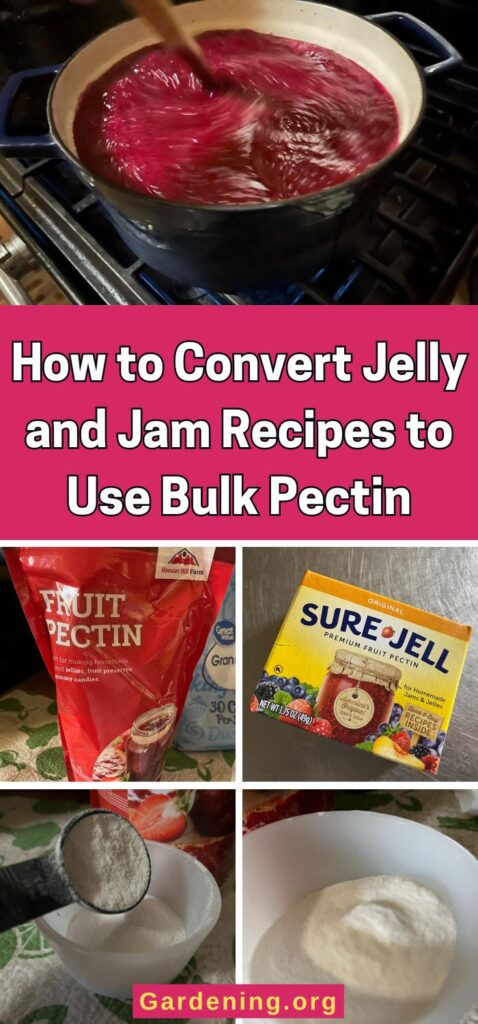

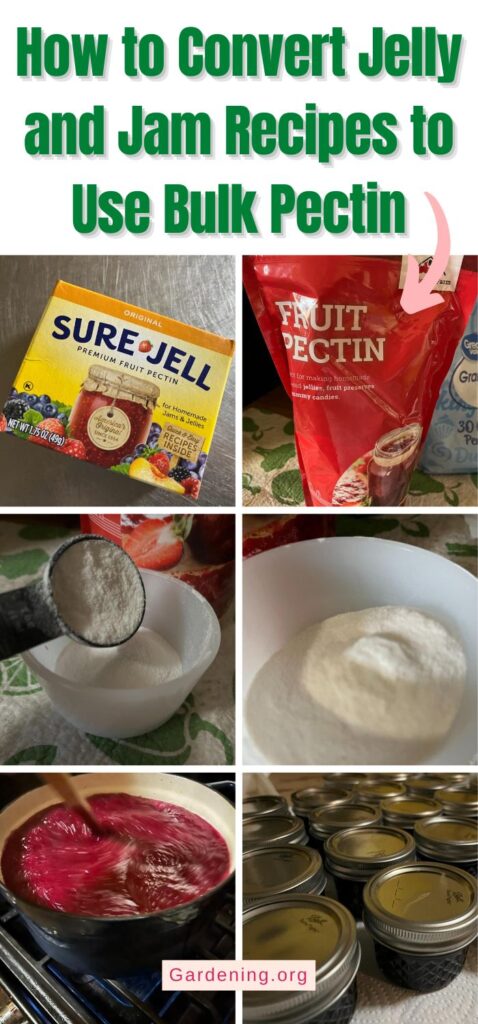
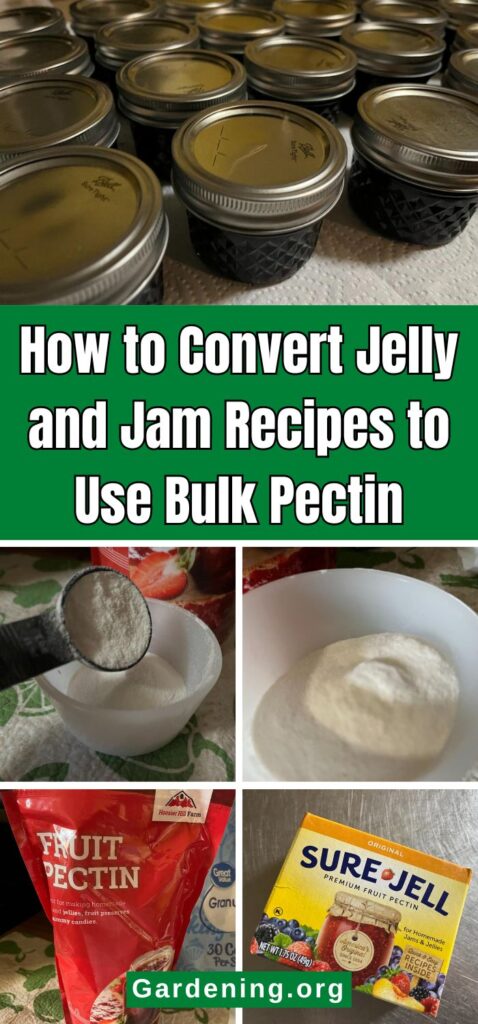


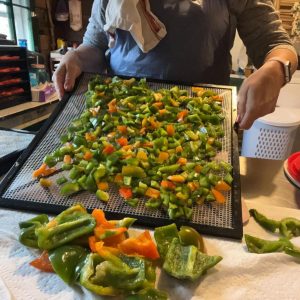

Leave a Reply